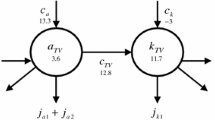Abstract
Systematic and random error and their growth rate and different components of growth rate budget in energy/variance form are investigated at wavenumber domain for medium range tropical (30‡S-30‡N) weather forecast using daily horizontal wind field of 850 hPa up to 5-day forecast for the month of June, 2000 of NCEP (MRF) model. Part I of this paper deals with the study at physical domain. The following are the major findings in this paper:
-
•Tropical systematic error is associated with large scale wave of wavenumber 2, unlike the tropical random error, in which case dominant spectra of random error are observed at higher spectral band of wavenumbers 4–7 in comparison to that of systematic error.
-
•Systematic error growth rate peak is observed at wavenumber 2 up to 4-day forecast then the peak is shifted to wavenumber 1 at 5-day forecast. Random error energy shows maximum growth at wavenumber 4 for 2-day forecast, wavenumber 6 for 3–4 day forecasts and at wavenumber 7 for 1-day and 5-day forecasts.
-
•In the error growth rate budget, flux of systematic error shows the net increase of error energy at wavenumber 1 through the triad interactions with the pairs of waves of other wavenumbers. Flux and pure generation of random error energy are found to be accumulated at wavenumber 4. Resolving the possible triads in wavenumber 4 associated with these terms, it is shown that the wave receives more energy from the pairs of waves of different wavenumbers than it loses, leading to the error energy peak at wavenumber 4. However, the significant triad interaction occurs among the wavenumber 2 and higher wavenumbers in systematic error energy flux.
Similar content being viewed by others
References
Basdevant C, Legras B and Sadourney R 1981 A study of barotropic model flows: Intermittancy, waves and predictability;J. Atmos. Sci. 38 2305–2326
Boer G J 1984 A spectral analysis of predictability and error in an operational forecast system;Mon. Weather Rev. 112 1183–1197
Boer G J 1993 Systematic and random error in an extended range forecasting experiment;Mon. Weather Rev. 121 173–188
Boer G J 1994 Predictability regimes in atmospheric flow;Mon. Weather Rev. 122 2285–2295
Chakraborty D R 1995 Estimation of nonlinear kinetic energy exchanges into individual triad interactions in the frequency domain by use of the cross-spectral technique;IITM Research Report, RR-064 pp. 20
Dalcher A and Kalaney E 1987 Error growth and predictability in operational ECMWF forecasts;Tellus 39A 474–491
Kanamitsu M 1985 A study of predictability of ECMWF operational forecast model in the tropics;J. Meteor. Soc. Japan 63 779–804
Kanamitsu M and Saha S 1995 Spectral budget of short range forecast error of NMC MRF model;Mon. Weather Rev. 123 1834–1850
Klinker E and Capaldo M 1986 Systematic errors in the baroclinic waves of ECMWF model;Tellus 38A 215–235
Köckner N 1994 Numerical methods and scientific computing using software libraries for problem solving; (Oxford: Clarendon Press) pp. 315
Lambert S J and Merilees P E 1978 A Study of planetary wave errors in a spectral numerical weather prediction model;Atmosphere-Ocean 16 197–211
Lorenz E N 1969a Three approaches to atmospheric predictability;Bull. Amer. Meteor. Soc. 50 345–349
Lorenz E N 1969b The predictability of a flow which possesses many scales of motion;Tellus 21 289–308
Lorenz E N 1982 Atmospheric predictability experiments with large numerical model;Tellus 34 505–513
Murakami T and Tomatsu K 1964 The spectrum analysis of energy interaction terms in the atmosphere;J. Meteor. Soc. Japan 42 14–25
Savijarvi H 1984 Spectral properties of analyzed and forecast global 500 mb fields;J. Atmos. Sci. 41 1745–1754
Tomatsu K 1979 Spectral energetics of the troposphere and lower stratosphere; In: Saltzman B (ed)Advances in Geophysics (New York: Academy Press) pp. 289–401
Van Den Dool H M 1994 Searching for analogues, how long must we wait?Tellus 46A 314–324
Author information
Authors and Affiliations
Rights and permissions
About this article
Cite this article
De, S., Chakraborty, D.R. Tropical systematic and random error energetics based on NCEP (MRF) analysis-forecast system — A barotropic approach. J Earth Syst Sci 113, 167–195 (2004). https://doi.org/10.1007/BF02709786
Received:
Revised:
Issue Date:
DOI: https://doi.org/10.1007/BF02709786




